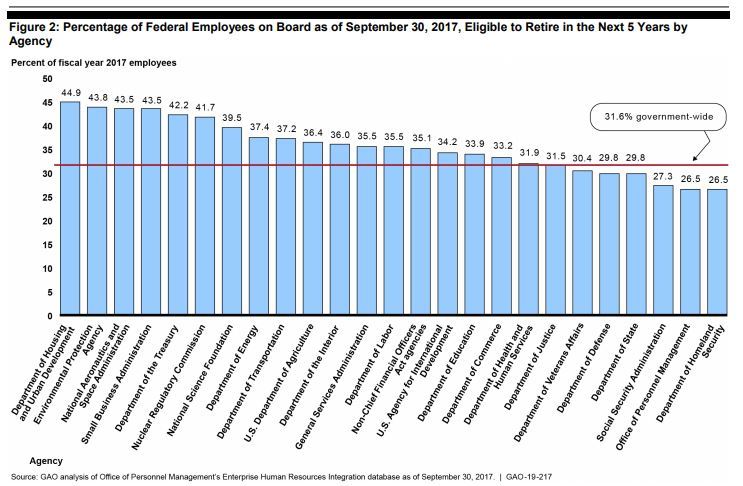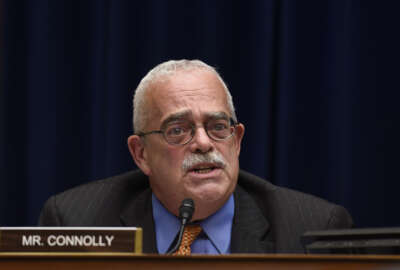
Inconsistent leadership behind OPM’s failed attempts to modernize retirement claims process, GAO says
The Office of Personnel Management lacks a clear vision and a specific IT strategy to modernize its retirement claims process, the Government Accountability Office...
An unfocused approach to IT modernization, as well as inconsistent agency leadership and persistent staffing challenges, have all stymied attempts by the Office of Personnel Management to improve the retirement claims process over the past several years.
OPM has long struggled to meet its goals to process employee retirement claims within a specified timeline. According to a recent GAO report, OPM hasn’t met its goal to process 90% of retirement claims within 60 days for three fiscal years. The agency did, however, see some success near the end of 2018 after OPM changed its processing goal.
The retirement claims process itself is complex and multifacted, which OPM has acknowledged and has attempted to improve and modernize for several years.

GAO has been watching OPM’s attempts to modernize the retirement claims process itself for two decades. It alerted OPM to risks and deficiencies with its modernization efforts in 2005, 2008 and 2009 before noting progress in 2011. OPM abandoned the retirement modernization effort later that year.
OPM refocused its modernization efforts and developed a new vision in 2013. The agency has broadly outlined an incremental approach with five initiatives to modernize the retirement application system. All five pieces, which include an electronic retirement record, an online application form for employees and a new case management system, are partially developed or implemented.
But “OPM officials provided no further explanation about how retirement IT modernization activities would proceed, such as describing proposed time frames and estimated cost ranges, even for initial project phases,” GAO wrote in a recent report.
“OPM officials said that additional IT modernization work is dependent on sufficient funding, support from the Office of the Chief Information Officer and development of a technical enterprise architecture roadmap,” the report continued. “These components are important. However, they do not preclude OPM from establishing a basic project management plan that includes objectives, estimated cost ranges and proposed time frames for its initial project phases.”
On top of that, the Trump administration’s proposed merger of OPM with the General Services Administration is creating additional uncertainty for the agency and its attempts to modernize the retirement claims process, GAO said.
“Potential changes in organizational affiliation, policy, budget and staff may make it difficult for OPM to plan for large-scale changes in its operations,” GAO said. “Nevertheless, continuing to develop plans to modernize retirement IT systems seems prudent, given that the details of the reorganization are still unknown and that the move to the General Services Administration may not occur in the near term, or at all.”
GAO, along with OPM’s own inspector general, were critical of the details OPM had provided to the oversight bodies and Congress about its plans for the merger.
Staffing has also contributed to OPM’s challenges with the retirement claims process.
OPM hired more staff in 2017 and 2018 to process an influx of retirement applications that typically come in during January and February of each year, but the agency needed overtime pay during these “surge” periods.
“Also, officials reported that hiring freezes, continuing resolutions and other budget constraints affected hiring numbers and created hiring delays over the past five fiscal years,” GAO said.
Yet GAO found OPM didn’t assess and track whether additional staff or training efforts made a noticeable difference. Any overtime pay that OPM did secure in recent years hasn’t been evaluated to measure whether the additional hours translated into greater output, GAO said.

GAO pointed to several areas where OPM had room to better evaluate its own performance and create data or evidence-based strategies to improve retirement claims processing.
For example, OPM provides retirement claims training and guidance to agencies but doesn’t measure the effectiveness of those resources, GAO said.
Assessing the effectiveness of this training could be helpful, GAO said, because OPM continues to find errors and missing information in the retirement applications that come from individual agencies.
Nearly 40% of retirement applications that come to OPM are missing information, such as a signature, form or additional action from the applicant, according to GAO.
OPM’s attempts to modernize the retirement claims process come as a higher proportion of the federal workforce becomes eligible to retire in the coming years.
Nearly 32% of the federal workforce is eligible to retire in the next five years, according to GAO. Some agencies, such as the Department of Housing and Urban Development and Environmental Protection Agency, have particularly high populations of retirement-eligible employees.

OPM partially agreed with GAO’s recommendations.
GAO, for example, reiterated its suggestion that OPM develop a detailed retirement services IT modernization plan.
“OPM stated that it has established initial high-level funding estimates for each of its five key initiatives, but OPM did not provide any documentation or further details,” GAO’s report reads. “OPM cited that its ability to implement the modernization plan depends on the availability of funding and coordination with the agency’s top leadership. We agree these are important elements, which further underscore our recommendation.”
Acting leaders have steered OPM through several recent years. Margaret Weichert, the agency’s current acting director, has been juggling the OPM job and her position as deputy director for management at the Office of Management and Budget for roughly eight months. She replaced Jeff Pon, OPM’s only permanent director in three years. Pon served for roughly seven months.
Michael Rigas, OPM’s current deputy director, was the agency’s first in five years. OPM in February named Clare Martorana as the agency’s new CIO, the fifth since 2015.
Copyright © 2025 Federal News Network. All rights reserved. This website is not intended for users located within the European Economic Area.
Nicole Ogrysko is a reporter for Federal News Network focusing on the federal workforce and federal pay and benefits.
Follow @nogryskoWFED
Related Stories

Congress not yet convinced of Trump administration’s proposed OPM-GSA merger




